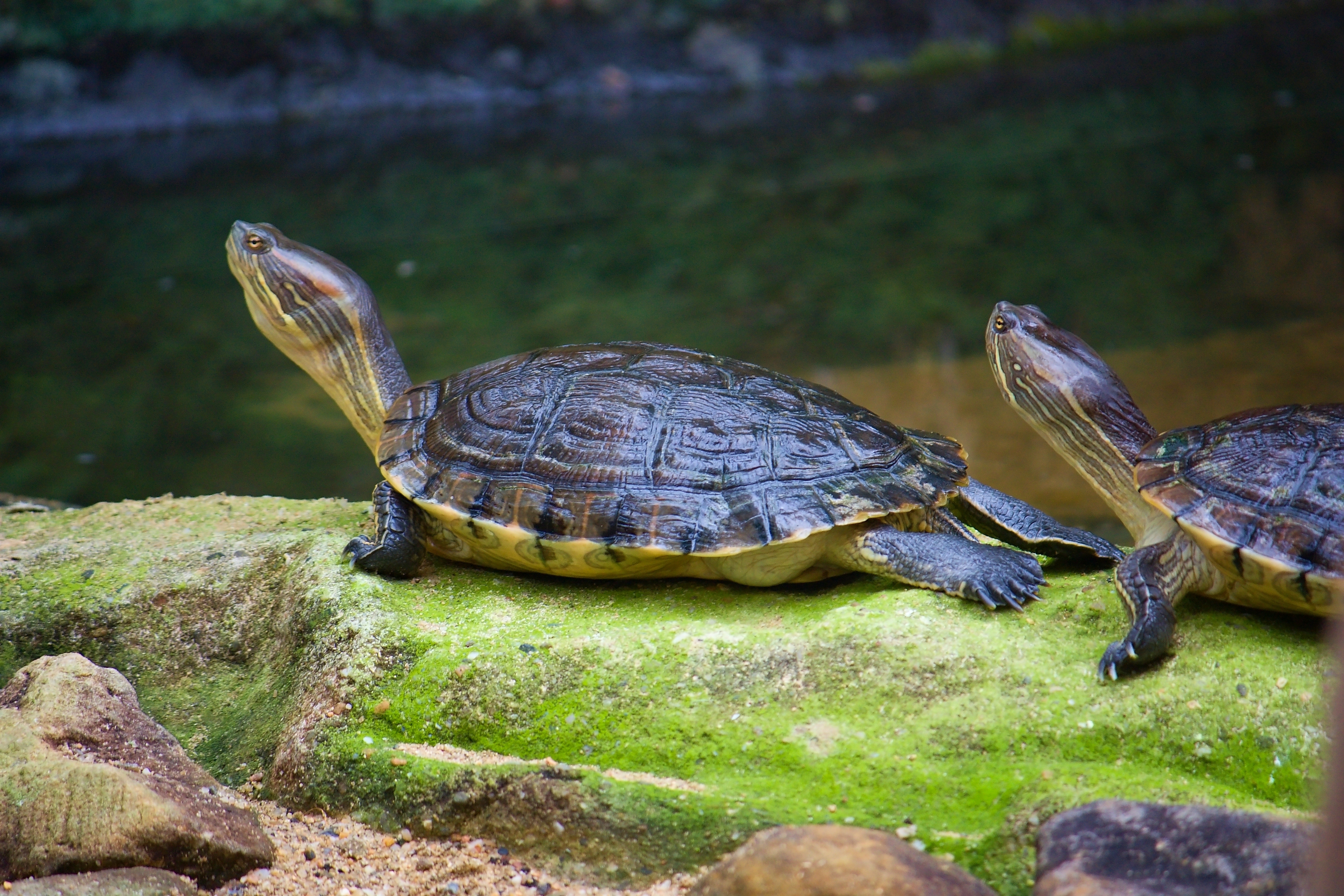Hickatee
(Dermatemys mawii)

Description
The hickatee (Dermatemys mawii) or in Spanish tortuga blanca ('white turtle'), also called the Central American river turtle, is the only living species in the family Dermatemydidae. The species is found in the Atlantic drainages of Central America, specifically Belize, Guatemala, southern Mexico and probably Honduras. It is a relatively large-bodied species, with records of 60 cm (24 in) straight carapace length and weights of 22 kg (49 lb); although most individuals are smaller. This is a herbivorous and almost completely aquatic turtle that does not even surface to bask. Bizarrely for reptiles, the eggs can remain viable even after being underwater for weeks -in the recent past, some scientists mistakenly claimed it nests underwater, likely due to visiting Central America during a frequent flood, when nests are often submerged. In the culture of the Ancient Mayan civilisation this species and turtles in general had numerous uses such as being used in warfare, as musical instruments and as food, with this species likely being consumed by the elites during feasts. The Maya probably exported these turtles to areas where they do not occur, based on their shell remains in kitchen middens. There is genetic evidence that the Mayan and other ancient peoples may have hunted the turtle to local extinction in areas it now occurs in, and that some modern turtle populations stem from turtles introduced into waterways from elsewhere. The turtle also had mythological symbolism, although the true nature of Ancient Mayan myth has been largely obscured by time. Among the modern communities inheriting this land the turtle continues to be eagerly sought as a dish eaten during important cultural events. The meat of this turtle is said to be very tasty. It has thus had a long history of exploitation. This has prompted Western conservationists to declare this use unsustainable, and that the turtle is now 'critically endangered', especially singling out the people of Tabasco as the culprits. In Belize, the only country where it is still legal to hunt these animals, it is still common in some areas, but populations are depressed in areas where people live. In Mexico the state of the population is unclear -it was said to be almost extirpated from Mexico in 2006 based on an entry in a book from the 1970s, but reasonable amounts are still caught in areas such as Tabasco and Quintana Roo. In Guatemala the species is abundant in some areas, but uncommon elsewhere.
Taxonomic tree:







